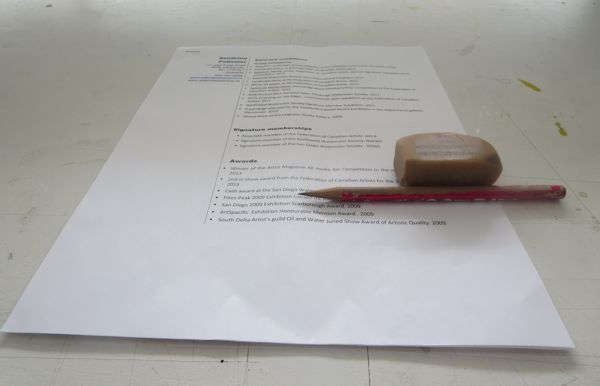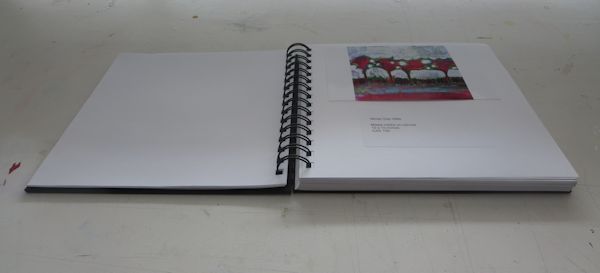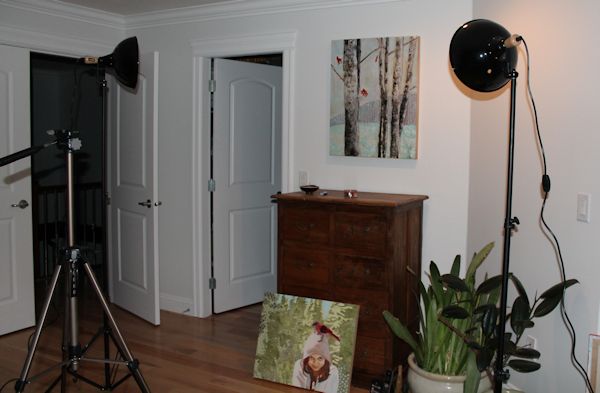An art portfolio is an artist’s resume. A portfolio allows you to present your work when applying for classes and jobs or when approaching a gallery for representation. You can also make a portfolio to show the full extend of your fine art work at an exhibition.
Some applications will have strict guidelines as what to show and how to organize your portfolio, while others leave more room for creativity. In any case, knowing how to create an art portfolio shows that you put time, thought and effort into the way your work was being presented, which, in turn, presents both you and your work in the best light possible.

Check out these tips building the perfect portfolio
1. Read the requirements.
The first and most important tip is to read and follow any and all requirements. If you are applying somewhere that lists requirements, you need to adhere to their guidelines. Some galleries might ask for a cover letter, artist statement and/or a bio. Chances are they won’t even consider you without first meeting all the expected stipulations.
2. Make it visually appealing.
The purpose of the portfolio is to showcase your talent and ability in a visually appealing way. Every image should be matted and straight. Your portfolio can be creative and visually interesting, but don’t forget that you should primarily focus on the works that are being showcased and not the creative elements of the portfolio itself.

Presentation portfolios are available in most art supplies stores in a variety of sizes.
3. Be sure to show only your finished pieces.
That way your technical abilities, style and center of interest are all showcased.
4. Select only your best work.
This can be tricky sometimes. You have to become your own worst critic, being completely objective about your work. While you can ask for outside input, in the end, you should be the one making the decisions.
5. Don’t try to show too much.
Usually a selection of 10 to 20 pieces that best represent your work is more than enough. Remember that the people looking at your portfolio will likely be reviewing many portfolios. You need to be efficient and concise in your presentation because it’s likely you will only get a limited amount of their time and attention.
6. Know your audience.
Consider what your audience is interested in and select accordingly. You should choose the works that will communicate what you want to show to that particular audience.
7. Portfolio is all about impression.
A good strategy is to put one of your best pieces at the beginning and another stellar piece at the end, ensuring a good first and last impression.

You can also build a portfolio to show the extent of your work at an exhibition.
8. Bigger is better.
It is usually better if you show larger images of your work. A3 is the most commonly used format for a portfolio.
9. Details, details, details.
Pay attention to the details in your portfolio. For example, it is important that all works are properly labeled with a title, medium and date of execution. A clean portfolio shows you really care about your work.
10. Make it flow.
There should be some cohesion among the pieces you present in terms of style, color and subject. Try to group the works following a logical progression.

Pay attention to the quality of pictures in your portfolio.
11. Use photography.
Whenever an original piece is too large to be included, it can still be displayed via photograph. When using photographs in place of originals, pay attention to the quality of the photos. They should be taken with proper lighting (two light sources at a 45-degree angle), no glare and no visible frame.
High-quality pictures require only a good digital camera or DSLR. If you don’t own the necessary materials, you can always ask a photographer to take the pictures for you.

Two light sources at a 45-degree angle will produce the best light for taking pictures of your artwork.
12. Meet the press.
Adding articles and press releases at the end of your portfolio can showcase your experience. Exhibit invitation cards can also bolster your portfolio.
[box type=”shadow”]
Expand your portfolio from the comfort of your own studio by learning new skills online through Bluprint’s fine art classes.
[/box]

Share tips, start a discussion or ask one of our experts or other students a question.
No Responses to “Work of Art: 12 Tips on How to Create a Perfect Art Portfolio”